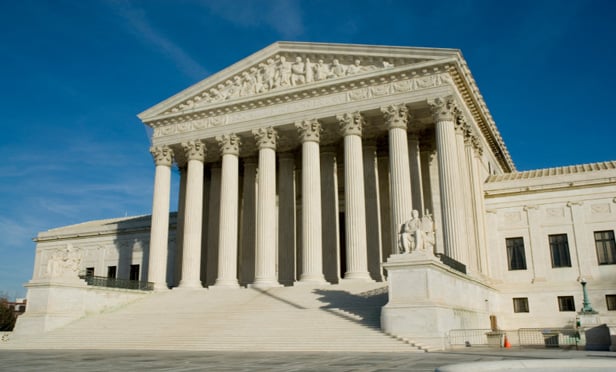Features

Appellate Court Reverses Chapter 11 Confirmation Order Based on Faulty Tax Ruling
The Northern District of California recently issued two blistering opinions on appeals by the IRS and California Franchise Tax Board from a bankruptcy court's Chapter 11 plan confirmation order and a tax determination order.
Features

Corporate Bankruptcies and the Restructuring Solution
Recent, big-name Chapter 11 filings have brought to the light the importance of insurance solutions for companies in financial distress, as companies in this situation face oftentimes new and uncharted issues.
Features

Ninth Circuit Bankruptcy Panel Holds Lack of Timely Objection Bars Objection to Homestead Value Exemption
In In re Masingale, the U.S. Bankruptcy Appellate Panel for the Ninth Circuit held that in the absence of a timely objection, debtors who claimed a homestead exemption of "100% of FMV" in their residence had a valid exemption claim for the full fair market value of the property.
Features

Bankruptcy Court Rules Limited Partnership Agreement Is Not an Executory Contract
Certain types of agreements, such as real estate leases, clearly are executory contracts subject to assumption or rejection in bankruptcy cases. But what about the partnership agreement itself?
Features

Courts and Plaintiffs Lawyers Question Viability of 'Texas Two-Step'
As defendants increasingly seek bankruptcy as a resolution to multidistrict litigation claims, plaintiffs firms and judges are starting to ask questions about the legitimacy of the tool commonly referred to as the "Texas Two-Step."
Features

Innocent Business Partner's Fraud Liability Survives Bankruptcy
The decision by the Supreme Court has practical significance for corporate officers and others in an agency or partnership relationship, and also may have serious consequences for corporate Chapter 11 debtors whenever a "domestic governmental unit" is a creditor.
Features

Prejudgment Attachment of Assets Allowed By DE Bankruptcy Court
Are there exceptions to the general rule against prejudgment attachment that may allow a plaintiff to obtain injunctive relief against a defendant freezing the defendant's assets prior to the outcome of the litigation? This issue was recently considered by the U.S. Bankruptcy Court for the District of Delaware.
Features

The Role of Third-Party Releases In Successful Chapter 11 Reorganizations
Part One of a Two-Part Article This two-part article will examine the role of third-party releases in successful Chapter 11 reorganizations. This part will address the factors considered in each Circuit where such releases have been deemed permissible within the confines of the Bankruptcy Code, evaluate several recent cases highlighting the uncertainty created by the current Circuit split, and consider options for creating a clear, nationwide standard.
Features

Hourly Billing in FTX Bankruptcy Already At Historically High Level
Attorneys and consultants involved in the FTX bankruptcy have asked the District of Delaware bankruptcy court to approve billed hours and expenses totaling just under $37 million for the first six weeks of Chapter 11 proceedings.
Features

Can a Debtor That Has No Ongoing Business Operations Reorganize Under Chapter 11 In Good Faith?
In a recent decision, the U.S. Bankruptcy Court for the Southern District of Texas (the court) addressed whether a debtor that has no independent assets or ongoing business operations can reorganize under Chapter 11 in good faith.
Need Help?
- Prefer an IP authenticated environment? Request a transition or call 800-756-8993.
- Need other assistance? email Customer Service or call 1-877-256-2472.
MOST POPULAR STORIES
- The 'Sophisticated Insured' DefenseA majority of courts consider the <i>contra proferentem</i> doctrine to be a pillar of insurance law. The doctrine requires ambiguous terms in an insurance policy to be construed against the insurer and in favor of coverage for the insured. A prominent rationale behind the doctrine is that insurance policies are usually standard-form contracts drafted entirely by insurers.Read More ›
- A Lawyer's System for Active ReadingActive reading comprises many daily tasks lawyers engage in, including highlighting, annotating, note taking, comparing and searching texts. It demands more than flipping or turning pages.Read More ›
- The Brave New World of Cybersecurity Due Diligence in Mergers and Acquisitions: Pitfalls and OpportunitiesLike poorly-behaved school children, new technologies and intellectual property (IP) are increasingly disrupting the M&A establishment. Cybersecurity has become the latest disruptive newcomer to the M&A party.Read More ›
- Abandoned and Unused Cables: A Hidden Liability Under the 2002 National Electric CodeIn an effort to minimize the release of toxic gasses from cables in the event of fire, the 2002 version of the National Electric Code ("NEC"), promulgated by the National Fire Protection Association, sets forth new guidelines requiring that abandoned cables must be removed from buildings unless they are located in metal raceways or tagged "For Future Use." While the NEC is not, in itself, binding law, most jurisdictions in the United States adopt the NEC by reference in their state or local building and fire codes. Thus, noncompliance with the recent NEC guidelines will likely mean that a building is in violation of a building or fire code. If so, the building owner may also be in breach of agreements with tenants and lenders and may be jeopardizing its fire insurance coverage. Even in jurisdictions where the 2002 NEC has not been adopted, it may be argued that the guidelines represent the standard of reasonable care and could result in tort liability for the landlord if toxic gasses from abandoned cables are emitted in a fire. With these potential liabilities in mind, this article discusses: 1) how to address the abandoned wires and cables currently located within the risers, ceilings and other areas of properties, and 2) additional considerations in the placement and removal of telecommunications cables going forward.Read More ›
- Guidance on Distributions As 'Disbursements' and U.S. Trustee FeesIn a recent case from the Bankruptcy Court for the District of Delaware, In re Paragon Offshore PLC, the bankruptcy court provided guidance on whether a post-plan effective date litigation trust's distributions constituted disbursements subject to the U.S. Trustee fee "tax."Read More ›
